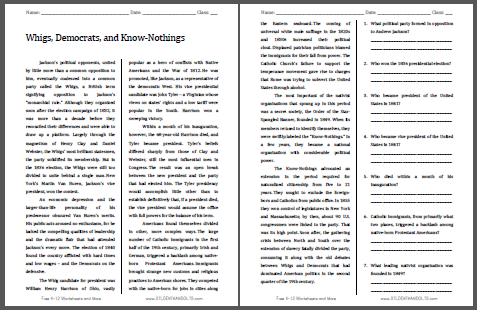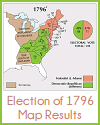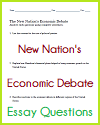Whigs, Democrats, and Know-Nothings |
|
Jackson's political opponents, united by little more than a common opposition to him, eventually coalesced into a common party called the Whigs, a British term signifying opposition to Jackson's "monarchial rule." Although they organized soon after the election campaign of 1832, it was more than a decade before they reconciled their differences and were able to draw up a platform. Largely through the magnetism of Henry Clay and Daniel Webster, the Whigs' most brilliant statesmen, the party solidified its membership. But in the 1836 election, the Whigs were still too divided to unite behind a single man. New York's Martin Van Buren, Jackson's vice president, won the contest. An economic depression and the larger-than-life personality of his predecessor obscured Van Buren's merits. His public acts aroused no enthusiasm, for he lacked the compelling qualities of leadership and the dramatic flair that had attended Jackson's every move. The election of 1840 found the country afflicted with hard times and low wages--and the Democrats on the defensive.
Within a month of his inauguration, however, the 68-year-old Harrison died, and Tyler became president. Tyler's beliefs differed sharply from those of Clay and Webster, still the most influential men in Congress. The result was an open break between the new president and the party that had elected him. The Tyler presidency would accomplish little other than to establish definitively that, if a president died, the vice president would assume the office with full powers for the balance of his term. Americans found themselves divided in other, more complex ways. The large number of Catholic immigrants in the first half of the 19th century, primarily Irish and German, triggered a backlash among native-born Protestant Americans. Immigrants brought strange new customs and religious practices to American shores. They competed with the native-born for jobs in cities along the Eastern seaboard. The coming of universal white male suffrage in the 1820s and 1830s increased their political clout. Displaced patrician politicians blamed the immigrants for their fall from power. The Catholic Church's failure to support the temperance movement gave rise to charges that Rome was trying to subvert the United States through alcohol. The most important of the nativist organizations that sprang up in this period was a secret society, the Order of the Star-Spangled Banner, founded in 1849. When its members refused to identify themselves, they were swiftly labeled the "Know-Nothings." In a few years, they became a national organization with considerable political power. The Know-Nothings advocated an extension in the period required for naturalized citizenship from five to 21 years. They sought to exclude the foreign-born and Catholics from public office. In 1855 they won control of legislatures in New York and Massachusetts; by then, about 90 U.S. congressmen were linked to the party. That was its high point. Soon after, the gathering crisis between North and South over the extension of slavery fatally divided the party, consuming it along with the old debates between Whigs and Democrats that had dominated American politics in the second quarter of the 19th century. |
Answer Key: (1) Whigs; (2) Martin Van Buren; (3) William Henry Harrison; (4) John Tyler; (5) William Henry Harrison; (6) Ireland and Germany; (7) Order of the Star-Spangled Banner, or "Know-Nothings". |
| Click here to print. |
 |
|---|
Text courtesy of the U.S. State Department, Bureau of International Information Programs, 2005 |


 The Whig candidate for president was William Henry Harrison
of Ohio, vastly popular as a hero of conflicts with Native
Americans and the War of 1812. He was promoted, like
Jackson, as a representative of the democratic West. His vice
presidential candidate was John Tyler – a Virginian whose views
on states' rights and a low tariff were popular in the South.
Harrison won a sweeping victory.
The Whig candidate for president was William Henry Harrison
of Ohio, vastly popular as a hero of conflicts with Native
Americans and the War of 1812. He was promoted, like
Jackson, as a representative of the democratic West. His vice
presidential candidate was John Tyler – a Virginian whose views
on states' rights and a low tariff were popular in the South.
Harrison won a sweeping victory.









